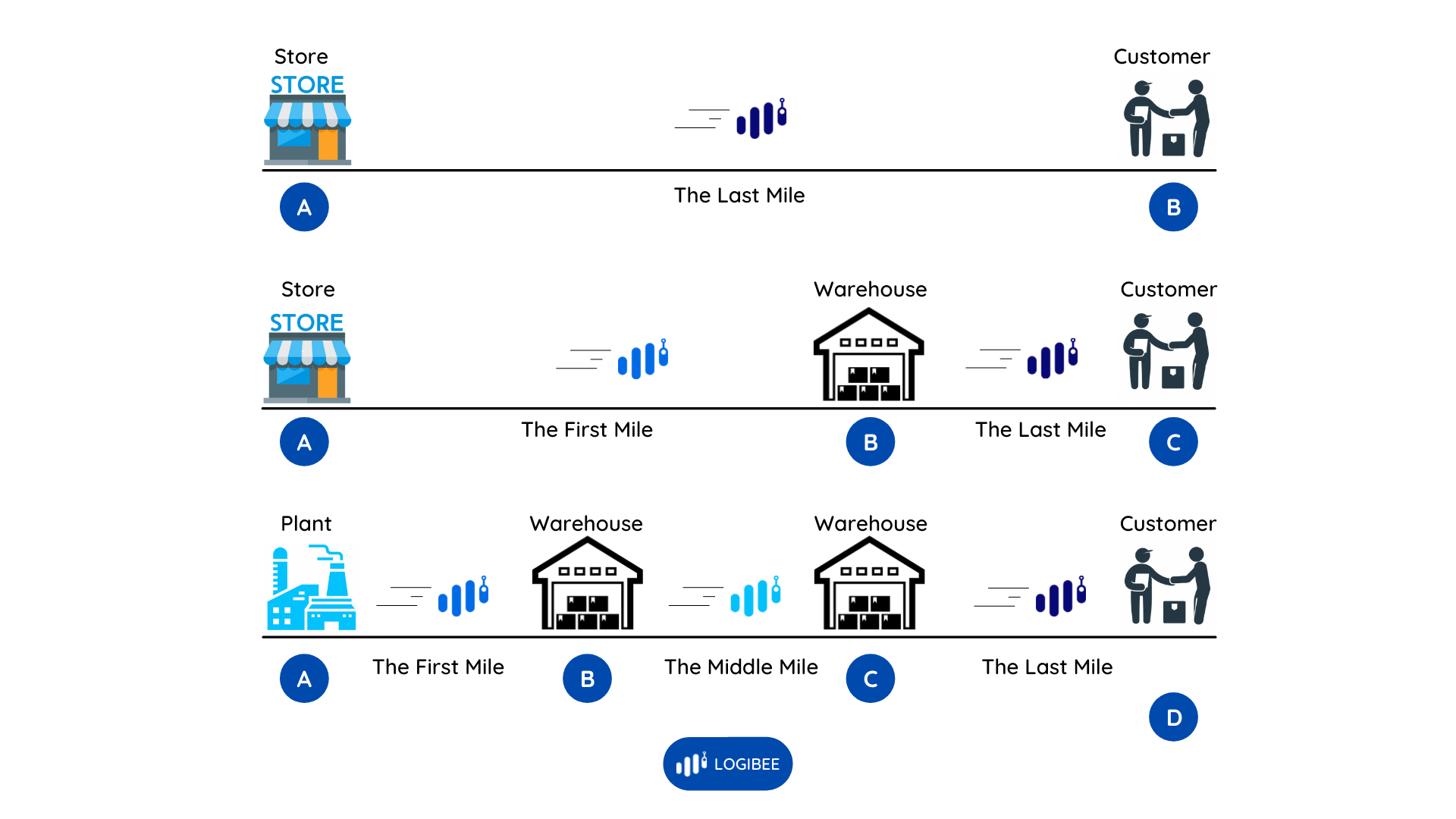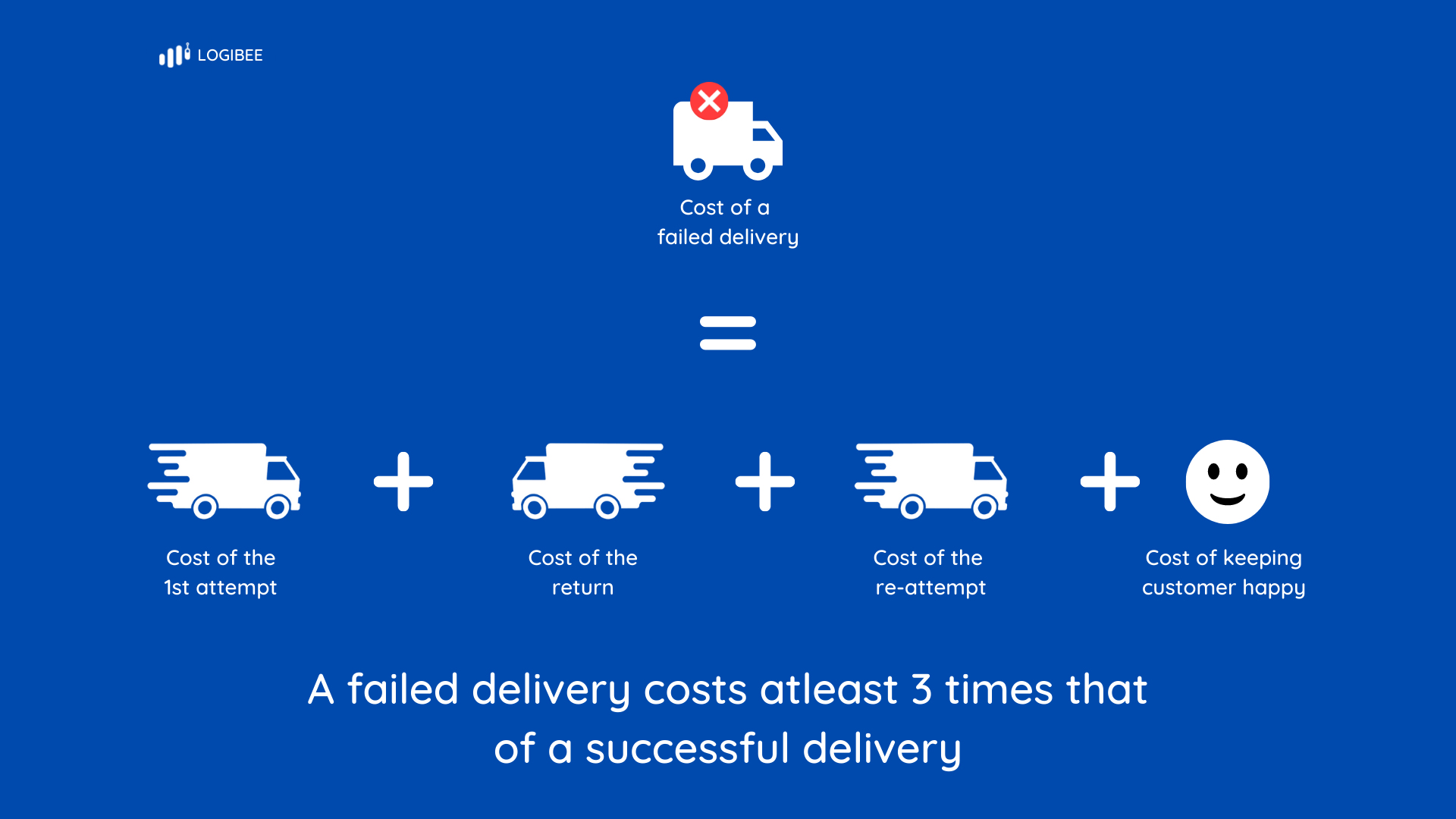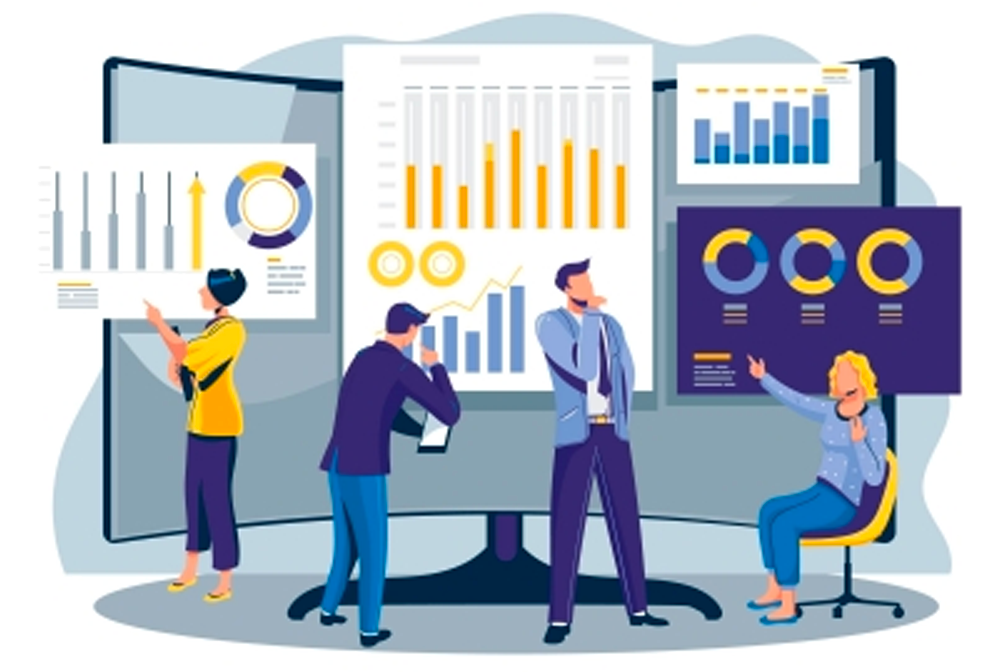Introduction
Small and medium businesses realized the value of Ecommerce operations only recently. Pre Pandemic,
most
of these businesses used to say “We are local players. We don’t need the online model.” However, an
era
of lockdowns during the past 18 months have opened their eyes to the opportunity.
This has been a global eye opening event.and it looks like we are not going back to
selling goods only
in the offline mode. Successful online selling requires orders to be safely and correctly delivered
to
customers. This may seem simple enough. But delivery operations management requires a lot of
attention
to detail.
Let us try to understand some basics first.
What is first, middle and last mile delivery?
Any logistics process can be explained as, pick up something from point A and deliver that to point
B.
However, based on what Point A and Point B are, the delivery life cycle is divided into three
journeys,
the first mile, the middle mile and the last mile. You can refer to the image below. To understand
these
three journeys, lets take three scenarios.
Let us say you are a single store retailer operating within a city. You would simply receive orders
online and deliver them to your customer. This is typically the last mile.

If you are a 3PL service provider, you may first transfer the goods from different stores to a
central
warehouse or distribution point. From there you’d deliver it to the receivers. Here you are covering
the
first and the last mile.
Suppose, you are a D2C service provider, having a countrywide / international reach. You may
transfer
your goods from your plant to different warehouses till you reach your customer. Here you are
covering
the first, middle and last miles.
Top 3 Challenges of first and last mile delivery life cycle
To a lay person’s eye, logistics would look straight forward. Research clearly shows that a whopping 55% of delivery failures happen at the warehouses and another 35% in the transportation process. Together these two places account for 90% of delivery failures. Let’s now look at the challenges in the logistics processes.
-
Improving Delivery Efficiency
Efficiency means getting results with minimum resource utilization. Meeting customer expectations is unavoidable. Therefore, one has to optimize cost, time and effort by
- Managing fleet, drivers or on-field agents and shifts to meet delivery schedules.
- Planning trips to use maximum capacity so that fuel is used optimally..
- Routing the vehicle through the shortest possible routes
-
Avoiding Delivery Failures
Logistics is often compounded by evolving on ground situations such as weather, traffic, road repairs and maintenance, vehicle breakdowns, etc. All or any of these can cause a delivery failure. Thus, understanding and responding to evolving on ground situations/exceptions is more of a necessity.
In addition, Delivery failure comes with a cost. The cost of a failed delivery is at least three times the cost of a successful delivery. Refer to the figure below and you’ll see why!
-
Real Time Customer Communication
Both B2B and B2C customers expect to be able to track their deliveries. Visibility over the first and last miles is a priority for customers. Imagine a retailer who hires a 3rd Party Logistics Partner for the last mile delivery. They need to be able to inform their customers where their package is. That builds trust and comfort and hence is important.
To ensure first mile and last mile effectiveness, we should make sure that all delivery information is accurate. The system or process we follow must be able to generate correct labels, and allow for tracking the parcels throughout the journey.
When we ensure accurate and point to point tracking, respond to all evolving on-ground situations to avoid delivery failure and do it faster, cheaper and better, then we have solved the logistics puzzle. As we can see none of this is possible without the help of IT Enabled Technology.

What is delivery management software?
It is a piece of software that helps you manage all the operations involved in making sure your
parcels
are picked up and delivered to the correct locations without an error.
There are many delivery management softwares available for purchase. Here’s a Capterra list of top
delivery management softwares if you are interested in checking out.
These softwares can handle a range of functions. Most of these softwares are built by people with
deep
knowledge about logistics and supply chains. Thus, they would have the capabilities to counter the
challenges mentioned above.
What can a delivery management software do?
Delivery management software can do many things from simple automation to advanced AI based optimization. Here are 5 must have capabilities of delivery management software.
-
Delivery Order Data Upload and Validation
Customer orders contain delivery information. In addition, based on the type of player you are, you will be adding your own information. If this information is incomplete or inaccurate your deliveries are bound to fail. Most delivery management softwares allow you to:
- Bulk upload your orders using a popular format like csv or excel
- Help you set up validation rules to ensure accurate and complete information availability.
-
Automation of routine work
Many tasks such as managing delivery zones, fleet, driver and shift management can be automated. Automation helps you to get routine tasks done easily and in less time. This way you will be able to focus on more important areas which require your attention rather than spending time on simple routine tasks.
-
Real time communication
Most delivery management software have a companion mobile app that can help in tracking the emerging on ground situations in the delivery life cycle. These apps seamlessly communicate with customers as well as with back end operations. They can send communication through in-app notifications, email as well as SMS. This real time communication can help manage most challenges in the delivery life cycle smoothly.
-
Real time information dashboards
Information is the life blood of an efficient delivery management system. Tracking parcels and ensuring accurate delivery can save cost, time and money. This is very crucial for small and medium businesses that operate on shoestring budgets.
Most delivery management softwares have real time dashboards. Changes in trip status, delivery status, on field agent reports on evolving on ground situations are recorded and updated in real time. -
AI powered optimization
Finding the least distance paths, scheduling deliveries, planning for optimal capacity, etc., are well understood mathematical problems. Researchers keep innovating techniques needed to solve these problems efficiently.
This is translated into AI algorithms that save time, money and effort. As more and more real time information flows in the system, these systems can be fine tuned to be most optimal.
Conclusion
We think that a delivery management software must be clearly aligned to industry best practices and save time and effort so that we can focus on our core business. Even though first and last mile deliveries are operationally intensive, delivery management software can help us achieve our strategic business goals. But one needs to carefully evaluate and invest in the right software.
